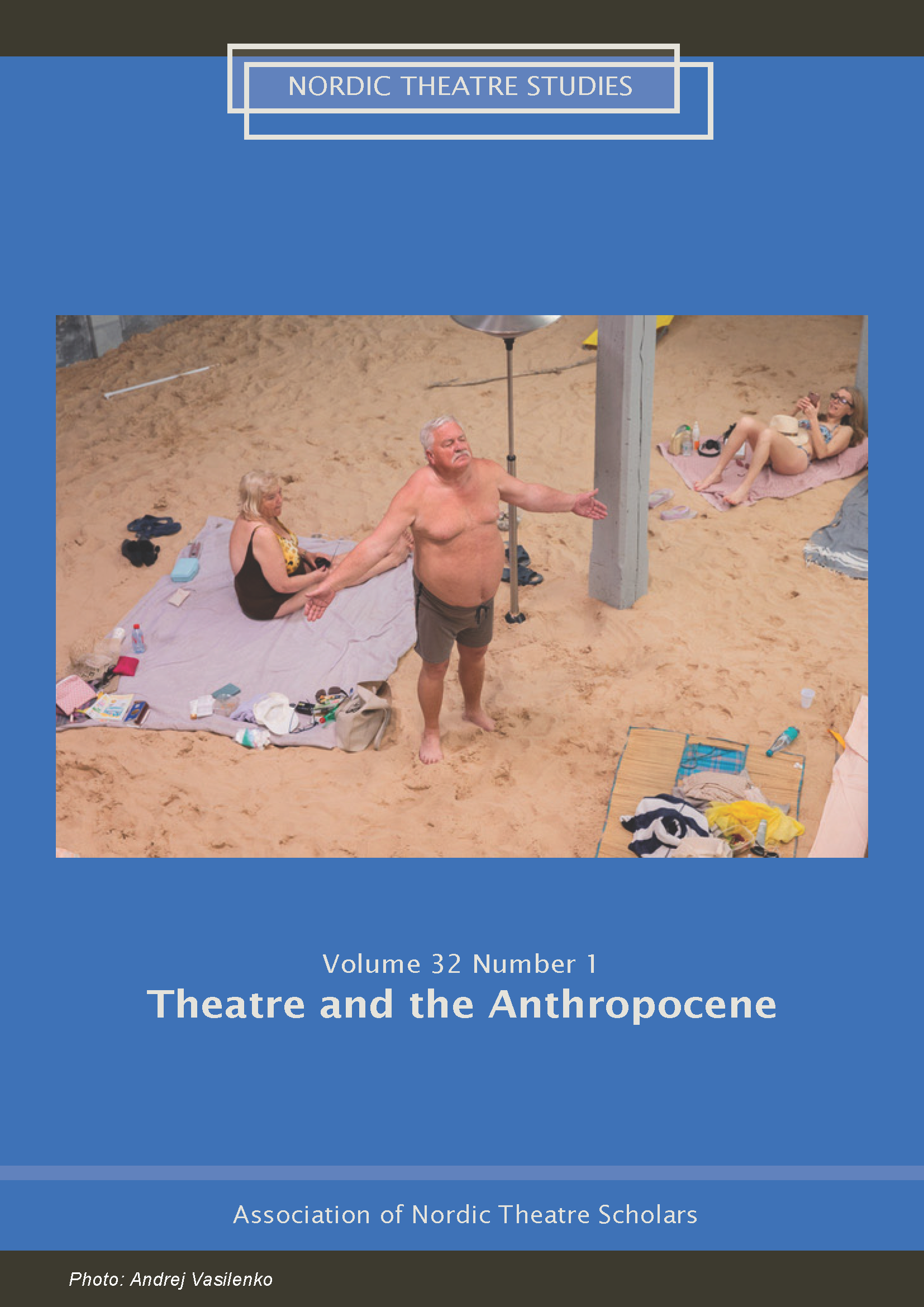Theatricality and Drifting in the Anthropocene
Reading Asger Jorn and Guy Debord’s Mémoires as ‘earth book’.
DOI:
https://doi.org/10.7146/nts.v32i1.120414Abstract
This essay proposes a new way of reading the Situationist notion of dérive (drift) in the Anthropocene by thinking of it as an operation that is geological in impetus, a sense of movement caused by an agentic earth. Equally, it looks to offer an alternative and expanded theory of theatricality in which the theatrical is no longer associated with theatre per se. On the contrary, it is now seen as a mode of representation that deterritorializes spectators by placing them in the midst of groundless flows and anonymous processes. In the same way that the earth in the Anthropocene is figured as a dynamic and unstable planet, so drifting and theatricality, when brought together, radicalise our extant understandings of the stage by allowing it to become motile, a terrestrial force. Here, the ecological potential of theatre is not found in staging plays about climate change or insisting on site-specificity, but in thinking through the geological power of theatricality, its capacity to exist as a type of plate tectonics. Such an expanded understanding of theatricality explains why instead of paying attention to a specific theatre production or even to the medium of theatre in a restricted sense, I examine how, in their 1958 text and image collaboration Mémoires, the Danish artist Asger Jorn and his friend Guy Debord were able to transform the page into a stage – to theatricalize and geologize reading. In an attempt, simultaneously, to expand and undo itself, the article is not content to conceptualize its argument, it looks to theatricalize itself, to become a kind of drift, a geology of writing.
Downloads
Published
How to Cite
Issue
Section
License
The copyright belongs to the authors and Nordic Theatre Studies. Users can use, reuse and build upon the material published in the journal but only for non-commercial purposes. Users are allowed to link to the files, download the files, distribute the files on a local network (preferably by links), upload the files to local repositories if their institutions require them to do so, but not republish the files without proper agreements with the journal and the author.

